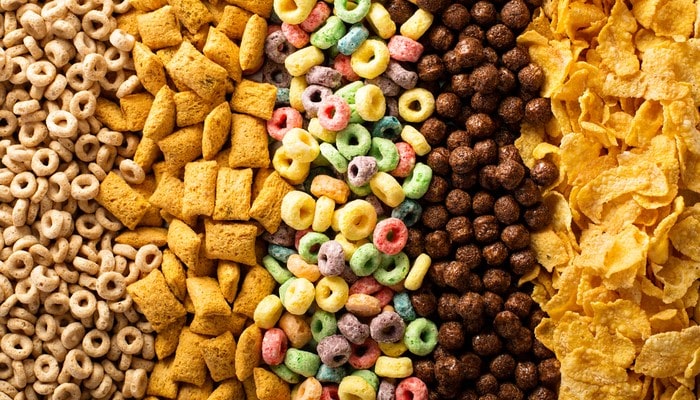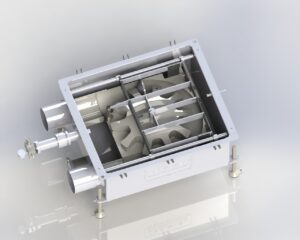Maintaining the freshness, taste, and nutritional value of breakfast cereals during processing is crucial to meet consumers’ expectations and ensure brand loyalty. As the demand for healthier and tastier options rises, understanding how to maintain the quality and integrity of breakfast cereals during processing becomes paramount. This guide delves into best practices and strategies to achieve just that, ensuring that every bowlful meets the highest standards.
Tracing the Evolution and Diversity of Breakfast Cereals
Breakfast cereals trace their origins to “granula” – distinct from granola – a dry, whole-grain concoction made by baking graham flour with bran and then breaking it into smaller pieces. Dreamt up by Dr. James Caleb Jackson in 1863, this early cereal needed a good 20-minute soak to make it eatable. Yet, it was William K. Kellogg who truly paved the way for the cereal industry, introducing the now ubiquitous cornflakes. By 1906, the Kellogg Company came into existence, marking a significant chapter in cereal history.
From Granula’s Inception to Modern Cereal Categories
Today, there are eight breakfast cereal categories commonly found on store shelves. These include:
- Flaked cereals,
- Extruded and whole-grain gun-puffed cereals,
- Oven-puffed cereals,
- Extruded expanded cereal,
- Shredded wheat,
- Extruded cereals,
- Granola.
While each of these requires unique manufacturing equipment, all of them go through a process of cooking the grain. This is usually done in combination with other ingredients, such as salt and sugar, other sweeteners, and heat-stable nutritional fortifying agents.
It’s at this cooking stage when the physical properties are created to develop the final product’s texture. There are, however, several other quality control aspects that cereal manufacturers need to consider to prevent the loss of vitamins and keep the crunch the cereal is loved for.
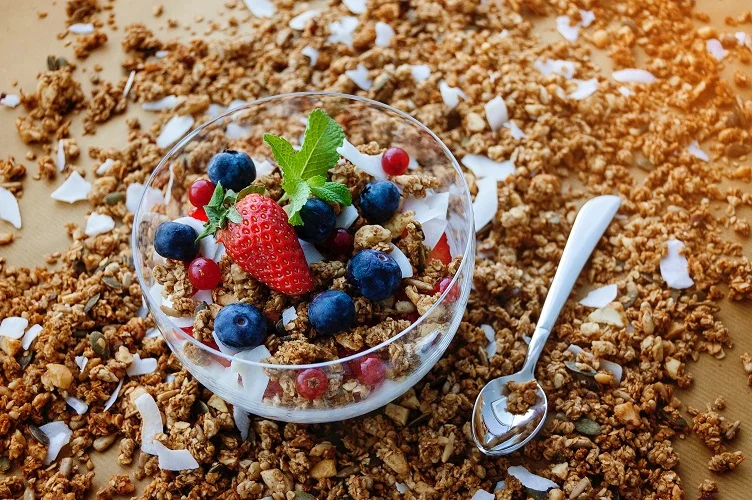
Why It’s Important to Know How to Maintain the Quality and Integrity of Breakfast Cereals During Processing?
In the meticulous journey of breakfast cereal production, every phase – from grain inspection to final cooking – demands unwavering attention to quality, integrity, and hygiene. The technological machinery, including an industrial conveyor belt, should predominantly be stainless steel, warranting routine sterilization.
Upon arrival at the production facility, grains undergo thorough checks for foreign contaminants. Additionally, parameters like temperature, moisture, mineral, and vitamin content are constantly regulated to guarantee accurate cooking, shaping, and nutritional accuracy.
The Science Behind Cereal Shelf Life and Its Longevity
Preserving the anticipated shelf life of cereals is paramount. Regular quality checks are conducted on stored cereals, often by exposing them to elevated humidity and temperatures, simulating accelerated spoilage. Such tests emphasize the moisture levels within cereals, as excess moisture can become a breeding ground for microbes.
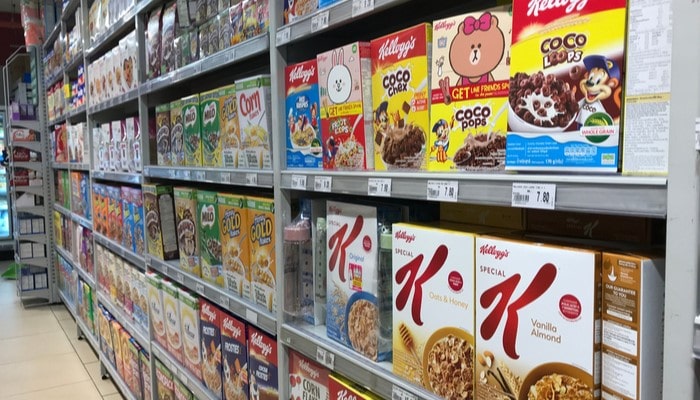
Quality Control and Microbial Contamination – Microbial Growth
Microorganism growth can be stifled during production when heat is applied. However, there is the possibility of post-heat contamination when sweeteners, flavorings, vitamins and minerals, coloring, and other additives and preservatives are added. This post-heat treatment has to be free of any microorganisms to avoid the contamination of the final product. The processing equipment used also needs to be maintained in proper sanitary conditions to avoid this issue.
Navigating the Conveyor Conundrum: Ensuring Cereal Safety in a Complex Production Landscape
The problem is most evident during product transfer between the different areas of production and materials processing – from heating and coating to drying and packaging. It’s at this point when the potential of exposure to foreign contaminants and allergens is particularly high. This problem is also exacerbated by the increasingly stringent consumer demand, as well as governmental and industry mandates for maintaining food safety and integrity.
Traditionally, cereal manufacturers used bucket elevators, flat-bed conveyors, and aeromechanical, auger, or pneumatic conveyor systems, among others. However, most of these conveyor systems have issues with cross-contamination, downtime, and long maintenance periods. Tubular drag cable conveyors, on the other hand, were proven to eliminate many of these risks and inefficiencies.
It’s important to keep in mind that low moisture levels in breakfast cereals stop microbial growth, but these microorganisms can still survive. That’s why there have been cases of cereal recalls due to Salmonella contamination. However, with a conveyor belt for food that has an efficient cleaning system that minimizes the possibility of contamination, you won’t have to worry about a thing.
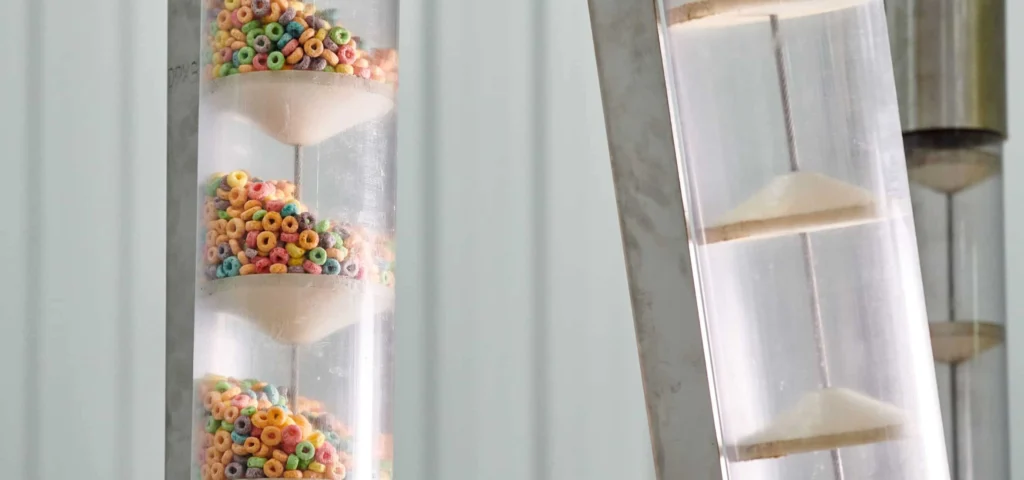
Breakfast Cereal Quality and Integrity Fundamentals
Starch gelatinization is the main purpose behind this cooking stage. This is a textural development needed for expansion or the development of cellularity in cereal, which is an important factor in the product’s organoleptic acceptability. The creation of water vapor, either through oven-puffing or toasting, or a sudden release of pressure when the product is superheated, as is the case with gun- or extrusion-puffing, results in the desired structural development.
To survive and respond to this vapor pressure, the cereal mix needs to be tough, elastic, and homogenous enough. The grains and the process used in making different types of breakfast cereals define the integrity of the final product.
How Cereal Achieves Its Signature Crunch and Consistency?
The process of starch gelatinization drives the cooking stage, a pivotal step in the textural evolution essential for the cereal’s expansion or cellularity development – key components in the product’s sensory appeal. The inception of water vapor, whether through oven-puffing, toasting, or a swift pressure release in superheated scenarios like gun- or extrusion-puffing, fosters the sought-after structural formation.
To withstand this vapor pressure, the cereal mix must possess resilience, elasticity, and uniformity. The integration of a conveyor belt system, especially a conveyor belt for a warehouse, streamlines the movement and handling of grains during this process, ensuring consistent quality. Ultimately, the grains chosen and the methodologies adopted in crafting diverse breakfast cereals underpin the integrity of the final delicacy.

Behind the Flake: The Art and Science of Crafting Perfect Cereal
Flaked cereals are made from whole grains or extruded pellets. In the cases of whole grains, the flaked cereal’s finished quality will be dependent on the grain selection. As such, a screening operation may be needed to achieve the right size for the flaking grits.
The basic processing steps in flaked cereals include mixing, cooking, tempering, dumping, delumping, drying, flaking, and toasting. For flakes to withstand processing, unmodified corn starch is added to the cereal flakes. A typical flake formula contains a specific mix of ingredients to achieve a 28 to 32% moisture content after cooking.
Strike the Balance for the Perfect Cereal Flakes
It’s after the initial cooking, drying, and tempering that the texture and moisture of the final product are controlled. For extruded flakes, this control process happens after extrusion. The optimal moisture rate of cereal flakes is between 1 and 3%.
Anything above that reduces the crunch in breakfast cereals, increases toughness, and does not allow them to blister correctly. A moisture level that’s too low causes the flakes to break prematurely, and it also poses problems during the flaking process.
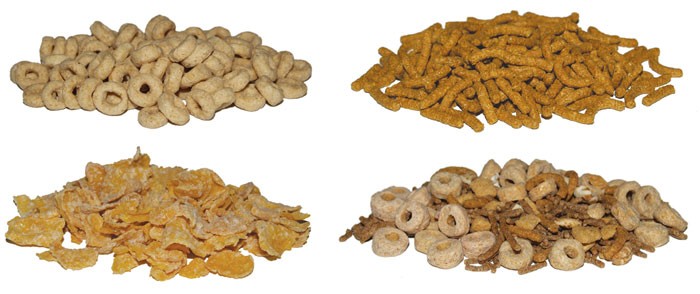
The Subtle Craft of Shredding: Perfecting Wheat Texture Through Timely Tempering
For shredded cereals, which are typically made of whole wheat, the critical step for controlling the finished product quality and integrity comes during tempering. The cooked wheat needs to be allowed up to 24 hours to temper before shredding. It’s during this time that the moisture equilibrates and firms up from starch retrogradation.
If there is insufficient tempering, the shreds will come out gummy, sticky, and crooked. They will also be more difficult to cut. Shredded biscuits are baked with an initial moisture level of 45% to a final level of around 4%.
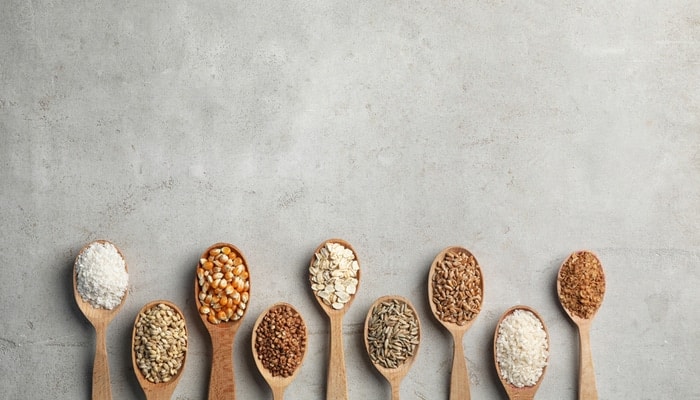
The Delicate Art of Gun-Puffing Rice and Wheat Cereals
Rice and wheat are the most common grains used in gun-puffing. For this process to work effectively, the grain must be cooked and then exposed to a sudden pressure drop. This releases steam from the grain very quickly, forcing it to expand (puff). Temperatures range between 400º and 500ºF, and the pressure is about 200 lbs. psi.
The resulting puffed grains will have a moisture level of between 5 and 7%, which requires a drying process to bring them down to between 1 and 3%. It’s important to note that puffed cereal is highly porous and can pick up moisture rather easily. As such, these types of cereal require a layer of coating and proper packaging material to maintain their crispiness.
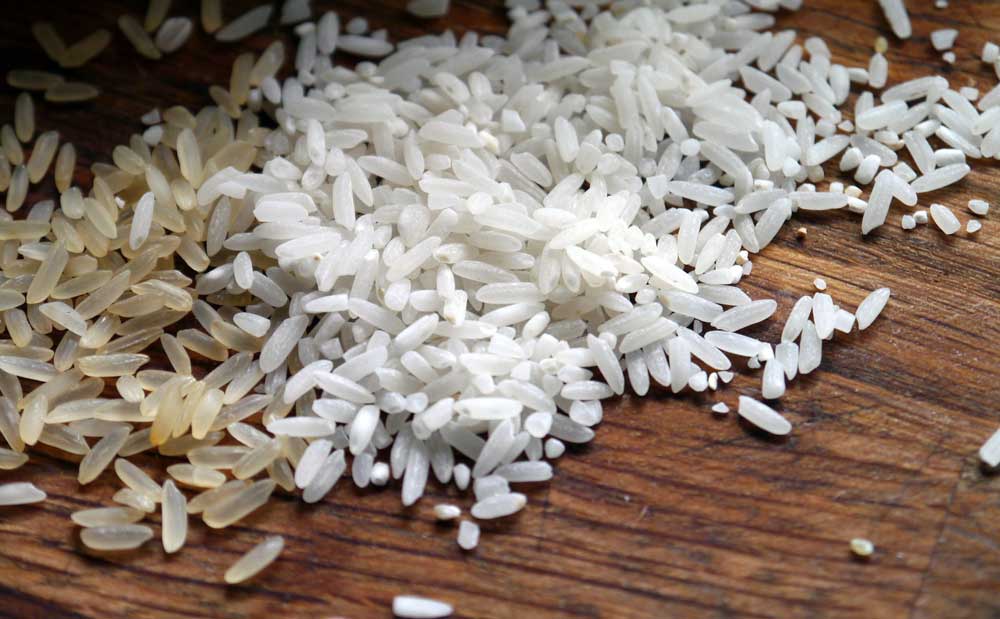
The Intricacies of Extruded Cereal Production
Extruded cereals use flour instead of whole grains. They are typically cooked and extruded at the same time. Basically, the twin-screw cooker mixes the flour with the other ingredients, pushing it to the other end in the form of an elongated ribbon. This is then cut into pellets with a rotating knife. General Mills Kix cereal was one of the first ones to be made with this technique.
By adding modified wheat starch, cereal manufacturers can produce a higher expansion volume, a better film-forming ability that slows down the absorption of milk into the cereal, and low-fat content, which improves the flavor characteristics. After the extrusion process, the moisture levels of the cooked pieces are around 20 to 24%. After two drying steps and gun-puffing, they reach the desired moisture content of between 1 and 3%.
Tubular Drag Systems Will Ensure the Consistency
However, such a low moisture content also means that the cereal product is particularly brittle and prone to breakage, especially when moved from one processing station to another. Fortunately, tubular drag conveyor systems will eliminate this risk entirely. The cereal will be moved between disks and pushed along the enclosed tube.
The discs will, in turn, be pulled by a cable and not smash or thrash the material around, as is often the case with aero-mechanical, pneumatic, or vacuum conveyor systems. They will also not be beaten up or crushed by using a chain conveyor or tossed around by bucket elevators. To put it simply, enclosed tubular drag cable and disc systems are ideal when it comes to dry or otherwise fragile materials as they ensure both product integrity and eliminate the risk of spillage.
The Comprehensive Process Behind Modern Granola Production
Even though many granola cereals are made entirely of all-natural ingredients, they are no longer just for “natural-food” eaters. Granola is basically a combination of whole wheat or quick oats mixed with a combination of nuts, brown sugar, coconut, malt extract, dried milk, honey, dried fruits, oil, and other spices in a process known as agglomeration.
The mixture is cooked at temperatures from 300º to 425ºF to achieve a light-brown color and moisture level of about 3%. Once cooking and drying are complete, the mixture is broken up into chunks. About 5% inulin, together with other carbohydrates, may be added to bind the granola.
Granola and cereal bars, with or without filling or coating, are also considered ready-to-eat breakfast cereals and are increasing in popularity. They can be made with either flaked, puffed, or extruded grains that are put together using a sugar-based solution and compressed under low pressure.
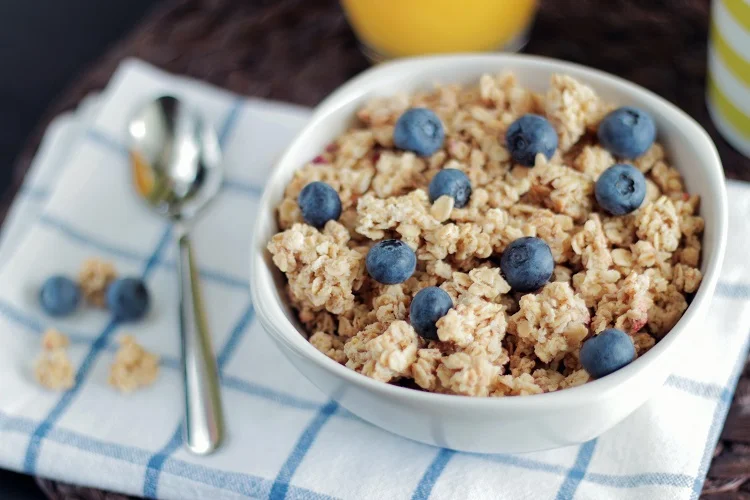
The Imperative of Rigorous Standards: Ensuring Microbial Safety in Cereal Bar Production With Cablevey Conveying Systems
There needs to be more diligence in cereal processing techniques to ensure that all the grains and other food additives are free of microbial contamination. The reason for this is that there is an increased risk since there is no heating step used in the production of cereal bars, which would help with the initial microbial count found in raw materials and cereal grains. The heat used to blend the binding syrup is not enough to reduce the microbial load found in contaminated cereal grain products.
The Role of Tubular Custom Conveyor Belt in Contamination Prevention
An added level of care needs to be given to ensure that cross-contamination does not occur throughout the rest of the manufacturing process, particularly from the processing equipment, personnel, or the surrounding environment. This is one area where processing technology like tubular drag cable conveyors is especially beneficial in ensuring the processing conditions and environment are free of contaminants.
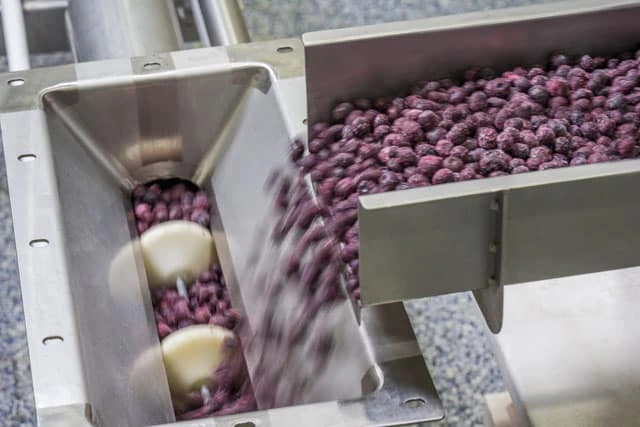
Upholding Cereal Excellence: The Superiority of Cablevey’s Tubular Drag Systems
Cablevey’s tubular drag cable and disc systems are enclosed and clean, using brushes, urethane disks, and air knives to mitigate breakage and accumulation of fines. They ensure quality by not breaking the final cereal product, as well as the integrity of any cereal blend that has multiple components in the mix.
Since the cereal is not blown, as is the case with pneumatic belt conveyor system conveyors, not sucked into a vacuum system, and not tossed around in bucket elevators, the final product in a tubular drag cable and disc conveyor will maintain both the quality and integrity of the blend exactly as the food scientist formulated it from the outset. Contact us today if you want to find out more about Cablevey Conveyors and the ways our systems can improve your breakfast cereal production line.
n the Quality and Integrity of Breakfast Cereals During Processing

